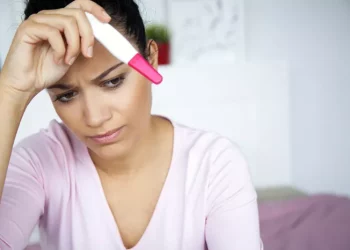Uterine polyps, also known as endometrial polyps, are growths attached to the inner wall of the uterus that extend into the uterine cavity. These polyps can range in size from a few millimeters to several centimeters and are composed of endometrial tissue. They are relatively common, especially among women in their 40s and 50s, though they can occur at any age. Uterine polyps are often benign, but they can lead to a variety of symptoms, including irregular menstrual bleeding, heavy menstrual periods, and bleeding between periods. One of the most significant concerns surrounding uterine polyps is their impact on fertility and pregnancy outcomes.
Uterine polyps have been implicated in various fertility issues, including difficulties with conception and an increased risk of miscarriage. Understanding the connection between uterine polyps and these fertility challenges is crucial for women who are trying to conceive.
How Uterine Polyps Can Affect Pregnancy
Interference with Embryo Implantation
One of the primary ways uterine polyps can affect pregnancy is by interfering with the implantation of the embryo. For a pregnancy to be successful, a fertilized egg must implant itself into the uterine lining (endometrium). Uterine polyps can occupy space within the uterine cavity, creating physical barriers that hinder the embryo’s ability to implant properly. This interference can significantly reduce the chances of a successful pregnancy.
Disruption of the Uterine Lining
In addition to occupying space, uterine polyps can disrupt the uniformity of the endometrial lining. A healthy and receptive uterine lining is crucial for the implantation and subsequent nourishment of the embryo. Polyps can cause irregularities in the endometrial surface, leading to a less hospitable environment for the embryo. This disruption can increase the risk of early pregnancy loss or miscarriage.
Inflammation and Inhospitable Environment
Uterine polyps can also contribute to inflammation within the uterine cavity. This inflammation can create an inhospitable environment for the embryo, making it difficult for the pregnancy to progress. The presence of polyps can trigger an immune response, further complicating the delicate process of implantation and early embryo development.
Polyp Size and Miscarriage Risk
The size of uterine polyps can influence the risk of miscarriage. Larger polyps are more likely to cause significant disruptions within the uterine cavity compared to smaller polyps. They are more prone to interfere with implantation, cause greater endometrial irregularities, and contribute to increased inflammation. Studies have shown that women with larger polyps have a higher incidence of miscarriage compared to those with smaller or no polyps.
See also: How to Improve Egg Quality Through Diet
Other Pregnancy Complications
Beyond miscarriage, uterine polyps can be associated with other pregnancy complications. For example, women with uterine polyps may be at a higher risk of preterm labor. The presence of polyps can lead to structural changes in the uterus, which might affect its ability to maintain a pregnancy to full term. Additionally, polyps can cause abnormal bleeding during pregnancy, posing further risks to both the mother and the developing fetus.
Diagnosis and Treatment
Diagnosis of Uterine Polyps
Diagnosing uterine polyps typically involves a combination of imaging tests and direct visualization. Transvaginal ultrasound is a common initial diagnostic tool used to detect abnormalities within the uterine cavity. If polyps are suspected, a hysteroscopy may be performed. Hysteroscopy involves inserting a thin, lighted tube through the cervix into the uterus, allowing for direct visualization and potential biopsy of the polyps.
Treatment for Uterine Polyps in Women Trying to Conceive
For women who are trying to conceive and have been diagnosed with uterine polyps, removal of the polyps is often recommended. The most common and effective method for removing polyps is hysteroscopic polypectomy. This procedure is minimally invasive and involves using a hysteroscope to visualize and remove the polyps from the uterine cavity.
Hysteroscopic polypectomy is generally safe and has a high success rate. Removing the polyps can significantly improve the chances of a successful pregnancy by eliminating the physical and inflammatory barriers that polyps can cause. Many women experience improved fertility outcomes following the procedure.
See also: Secondary Infertility: Causes, Treatment, and Hope
Conclusion
Uterine polyps can pose a significant risk to pregnancy, primarily through interference with embryo implantation, disruption of the uterine lining, and the creation of an inhospitable environment due to inflammation. Larger polyps are particularly concerning as they increase the risk of miscarriage and other pregnancy complications.
However, with appropriate diagnosis and treatment, the negative impact of uterine polyps on fertility can be mitigated. Hysteroscopic polypectomy is a safe and effective method for removing polyps, offering hope to many women struggling with infertility related to these growths.
For women experiencing fertility issues or concerns about uterine polyps, consulting a healthcare provider is essential. Early diagnosis and treatment can improve the chances of a successful pregnancy and reduce the risk of miscarriage and other complications.
Additional Information
This article is for informational purposes only and does not substitute for professional medical advice. For more information on uterine polyps and their impact on fertility, consider consulting resources such as the American Society for Reproductive Medicine (ASRM) or the American College of Obstetricians and Gynecologists (ACOG).
Related Topics:
Vaginal Dryness and Fertility: What is the Connection?



























